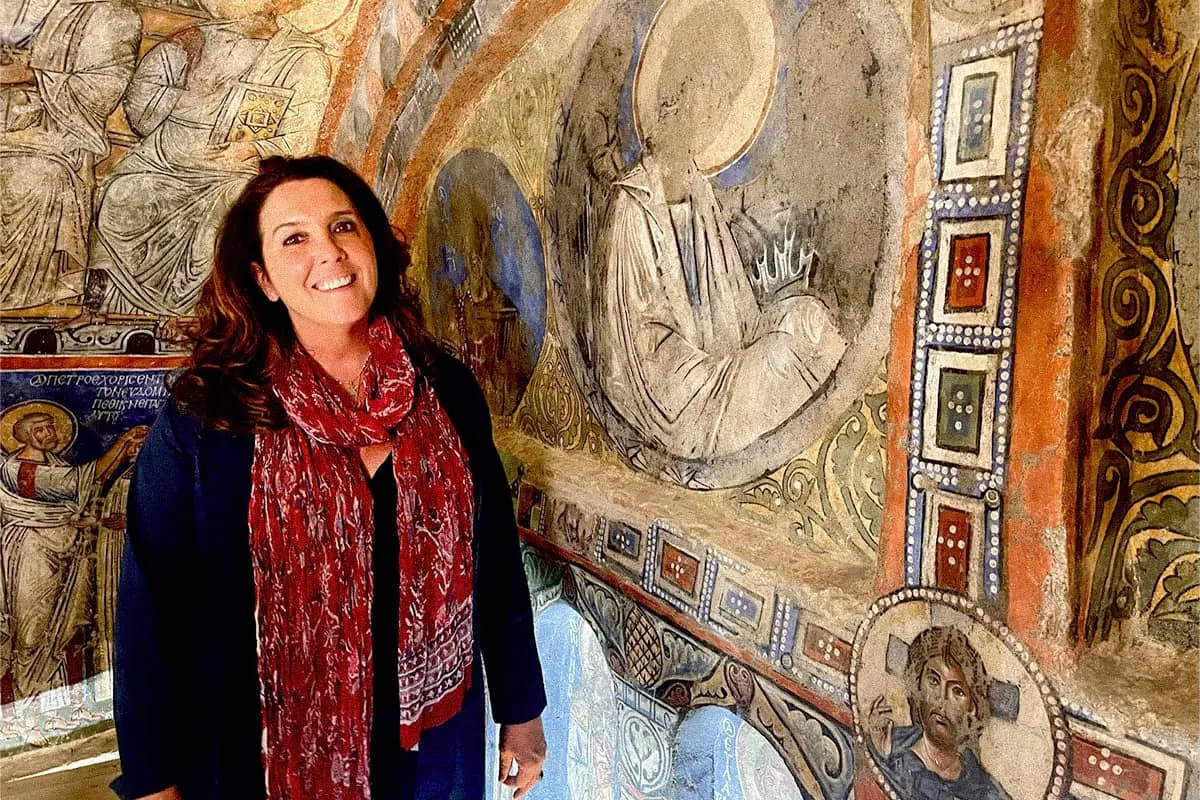Türkiye Travel Notebook
Treasures of Türkiye: The Delights of the East
Travelling in a 4x4 through the spectacular otherworldly region of Cappadocia, I visited rock carved settlements to understand how communities lived and used this remarkable landscape for centuries. Kaymaklı is a feat of engineering with 100 tunnels over 8 floors, cleverly designed to accommodate thousands of people.

Then we were taken to a brand new discovery - the incredible 11,000-year-old, stone-carved storyboard discovered in a cellar outside Şanlıurfa, in Southeastern Türkiye. It is from a similar period to Göbeklitepe. The stone carving shows a naked man being attacked by big cats and a charging bull. It was just discovered in a villager's cellar last year. It has never been filmed before, and not yet published. Extraordinary. It is the world’s first storyboard.
We went on to explore Şanlıurfa, one of the most important pilgrimage cities of North Mesopotamia , believed to be the birthplace of Abraham.
According to that tradition, Abraham’s mother was pregnant when King Nimrod was given a terrible prophecy by his stargazers that a boy child would destroy his Kingdom. Paranoid, the King had all pregnant woman brought to his palace. If they delivered a girl, they were allowed to go free. But if it was a boy, then that child was killed. So, to guard against this terrible fate, Abraham’s mother hid in a cave and birthed her son safely. The cave Abraham is said to have been born in, around 4000 years ago, is now in a mosque in Şanlıurfa. The cave of Abraham is visited by people from all faiths.
Travelling by boat on the Euphrates, I then went to Zeugma, an ancient Roman frontier city submerged in the river. In Zeugma we were allowed access by the archaeology team to a newly restored Roman house, saved from flooding by the Zeugma dam project. Here in the women's quarters graffiti has been identified left by the Roman women (time of Hadrian/Trajan) seeking protection from invading Sassanians. The graffiti includes 'SPQR', a drawing of the women's husband (a camelarius) and an attacking Sassanian. The mosaics here are also of stellar quality, featuring the Muses and female heroines from history - these are women's quarters. It was so fascinating to see the heroine women they chose to decorate their floors. World-class quality.
Finally, at the crack of dawn, I hiked up to Mount Nemrut, the highest open-air museum in the world, discovering a giant 2000 -year- old mausoleum built for King Antiochus 1st. We haven't actually discovered Antiochus’ tomb yet – but his burial is almost certainly right inside the mountain. 9-metre-tall statues of Gods decorate the peak- a statement that Antiochus saw himself as a King aligned with the Gods. It is one of the most awesome sights in the world.
Treasures of Türkiye - Sea and Secrets
Boarding a traditional gulet yacht, I set sail along the coast of Türkiye. At modern day Bodrum, ancient Halicarnassus, I uncovered the story of a remarkable ruling family from the 4th century BCE- the Hecatomnids.
.jpg)
Mausolos of Halicarnassus built one of the Seven Wonders of the world - his own tomb, the original Mausoleum. But before that he built a beautiful, secret tomb for his dad, Hecatomnus. We were given exclusive access to this tomb of Hecatomnus, this was only discovered by chance when an organised crime gang were busted for having drilled through the bedrock to rob it in 2015. Archaeologists first went in in 2019, but it has not been shown to anyone else. This is an incredible scoop. Only restorers have been allowed in. It is a masterpiece from the ancient world. Mausolos himself is shown as a child and as a young man on the carvings.
.jpg)
I loved returning to world-famous site of Troy to reveal how the tales of the Trojan War are rooted in reality. With the Director of Excavations at Troy we uncovered, on screen, the 4,500-year-old burnt mud-brick of the palace where Schliemann discovered the 'Jewels of Helen'. A palace burnt to the ground.
At the archaeological site of Patara I soaked up the atmosphere of the building with connections to the American constitution and discovered how the city was the hometown of St Nicholas – also known as Father Christmas. At ancient Myra, I met members of the excavation team who recently discovered one hundred intact figurines from the 2nd century BCE, from horsemen, women and children to gods and goddesses.
Finally, at Ephesus, one of the greatest cities of antiquity, I explored the cult of the goddess Artemis in public and private life. I got to walk through the newly restored private homes in Ephesus - with hot and cold running water and frescoes that rival Pompeii and revealed how the people of Ephesus took to the streets in the 1st century to protest against Christianity. But despite initial resistance to the new – Christian religion flourished in Ephesus. The city had a special connection to Jesus’ mother Mary who is said to have spent her final years nearby. The first church in the world to be dedicated to Mary stands here. And not only that but right here at the council of Ephesus in the 5th CE, Mary was declared ‘theotokos’ the mother of God.
